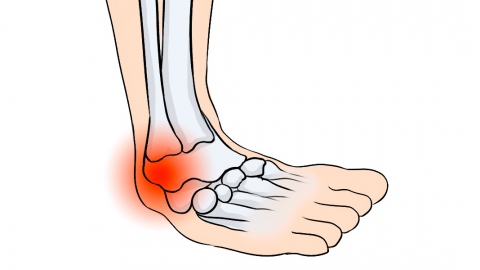Why does my foot hurt when warming by the fire?
In general, foot pain during exposure to heat (such as from a heater or fire) may be caused by local vasodilation, dry and sensitive skin, peripheral neuritis, diabetic foot, or thromboangiitis obliterans. It is recommended to seek medical attention promptly, identify the underlying cause, and receive symptomatic treatment under a doctor's guidance. Specific analyses are as follows:

1. Local vasodilation: When feet are exposed to heat from a fire, blood vessels rapidly dilate and increased blood flow stimulates surrounding nerves, causing pain. Immediately move away from the heat source and apply a room-temperature towel gently to the feet to help blood vessels gradually constrict and relieve pain.
2. Dry and sensitive skin: When the skin on the feet is already dry, exposure to heat can worsen moisture loss, damage the skin barrier, and lead to pain upon high-temperature stimulation. Heating should be stopped immediately, and moisturizing agents such as petroleum jelly, urea-vitamin E cream, or compound lactic acid cream should be applied. Daily foot moisturizing care is also important.
3. Peripheral neuritis: Conditions such as infection or nutritional deficiencies can cause peripheral neuritis. Exposure to heat may stimulate damaged nerves, intensifying pain. Patients may take nerve-nourishing and pain-relieving medications such as mecobalamin tablets, vitamin B1 tablets, or gabapentin capsules as directed by a physician.
4. Diabetic foot: Patients with diabetes often have nerve and vascular damage in their feet. Reduced sensation makes them prone to localized burns when warming their feet, which can then cause pain. Strict blood glucose control is essential. Medications such as insulin injection, metformin sustained-release tablets, and gliclazide tablets should be used as prescribed.
5. Thromboangiitis obliterans: Blood vessel blockage leads to insufficient blood supply to the feet. When exposed to heat, local tissue oxygen consumption increases, worsening ischemia and triggering pain. In severe cases, arterial bypass graft surgery may be required to restore blood flow, improve perfusion, and alleviate pain.
When warming feet near a heat source, maintain a safe distance and limit duration to avoid direct exposure. Keep feet clean and moisturized, wear loose and breathable footwear, and if you have underlying medical conditions, pay extra attention to foot warmth and protection to reduce the risk of pain.




